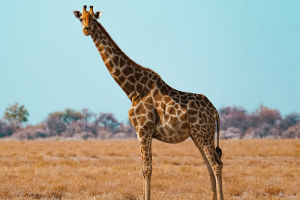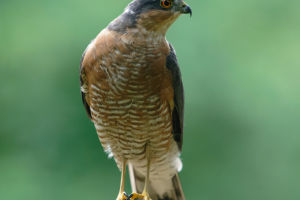Red deer (Cervus elaphus) are among the most majestic and recognizable animals found in forests, grasslands, and mountainous areas across Europe, Asia, and North America.
These creatures have fascinated people for centuries due to their size, beauty, and the important roles they play in ecosystems and human culture.
Let’s explore some intriguing facts about red deer, from their impressive antlers to their social behavior and seasonal migrations.
1. One of the Largest Deer Species
Red deer are one of the largest deer species, second only to moose and elk. Males, known as stags, can weigh anywhere from 160 to 240 kilograms (350-530 pounds), while females, called hinds, are typically smaller, weighing between 120 and 170 kilograms (260-375 pounds). The stags also stand tall, often reaching a height of about 1.2 meters (4 feet) at the shoulder.
2. Magnificent Antlers
One of the most iconic features of red deer is their impressive antlers. Only males grow antlers, which they shed and regrow each year. These antlers can grow up to 1 meter (3.3 feet) in length and weigh around 10 kilograms (22 pounds). The antlers are used for fighting during the rut, or mating season, when males compete for the attention of females. The size of a stag’s antlers often reflects its health and age, which can help females choose a mate. Interestingly, the growth of antlers is one of the fastest types of tissue growth in the animal kingdom.
3. The Rut: A Time of Fierce Competition
During the autumn months, red deer enter the rutting season, a time when stags engage in fierce competition for the right to mate with females. These battles often involve locking antlers and pushing against each other to establish dominance. The sound of roaring stags is common during this period, which serves as both a warning to rivals and an attraction for potential mates. A dominant stag may gather a harem of females, guarding them from other males and mating with them throughout the season.
4. Adaptability to Various Habitats
Red deer are highly adaptable and can thrive in a wide range of habitats. They are commonly found in forests, but they can also live in open grasslands, marshes, and mountainous regions. This adaptability has allowed them to inhabit many parts of the world, from the highlands of Scotland to the plains of New Zealand, where they were introduced by European settlers in the 19th century. In some regions, red deer populations are so large that they need to be managed to prevent overgrazing and habitat damage.
5. Social Structure and Communication
Red deer are social animals that live in groups. Females and their offspring tend to form herds, while males are often solitary or form bachelor groups, especially outside of the mating season. Communication within these groups is key to their survival. They use vocalizations, body language, and scent marking to convey messages. During the rut, stags produce deep, resonant calls called "roars" to assert dominance and attract females. These roars can carry over long distances and are a signature behavior of the species during this time.
6. Seasonal Migration and Adaptation
In many parts of their range, red deer engage in seasonal migrations, moving between higher elevations in the summer and lower elevations in the winter. This migration helps them follow the availability of food, which changes with the seasons. In colder climates, red deer grow a thicker coat of fur to help them withstand the winter chill. The change in their coat color, from reddish-brown in summer to grayish-brown in winter, also provides better camouflage in different environments.
7. Diet and Role in the Ecosystem
Red deer are herbivores, primarily feeding on grasses, leaves, and shrubs. However, their diet can vary depending on the season and the availability of food. In winter, they may resort to eating twigs, bark, and even heather. As herbivores, red deer play an important role in shaping the ecosystems they inhabit. Their grazing can influence the growth of vegetation, which in turn affects other wildlife species. In some areas, red deer populations need to be carefully managed to prevent overgrazing, which can lead to habitat degradation.
8. Lifespan and Predators
In the wild, red deer can live for about 10 to 15 years, although some individuals may live longer in areas where there are fewer predators. In their natural habitats, red deer face threats from predators such as wolves, bears, and lynxes. In regions where large predators have been extirpated or are scarce, humans become their main threat, primarily through hunting. Regulated hunting is often used as a tool for population control, as red deer can multiply quickly and impact their environment if left unchecked.
9. Symbolism and Cultural Importance
Throughout history, red deer have held significant cultural and symbolic value. In ancient European cultures, red deer were often associated with nobility and were considered a symbol of power, strength, and freedom. The image of the stag is still used in heraldry and as a symbol in various traditions, especially in Scotland, where the "Monarch of the Glen" painting by Sir Edwin Landseer immortalized the red deer as an emblem of the Highlands.
Red deer are fascinating creatures, from their majestic antlers and complex social behaviors to their adaptability across diverse landscapes. Whether admired for their beauty, observed in the wild, or hunted for sport, these animals continue to capture human imagination and remain an essential part of the natural world. Understanding their behavior, habitat needs, and role in the ecosystem can help ensure their conservation for future generations to appreciate.


